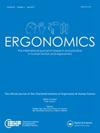集成设计师知识和三维人体测量数据的个性化参数化服装款式智能推荐系统。
摘要
服装制版是服装业最重要的组成部分之一。然而,传统的样板制作是一项基于经验的工作,非常耗时,而且忽略了人体体形的差异。本文提出了一种基于人体扫描仪获取的人体尺寸和设计师根据专业知识识别的人体特征(人体特征点和三个分割的身体部位形状分类)的服装样板参数化设计方法。利用这种方法,我们构建了一个以个性化合体为导向的男士衬衫版型推荐系统。该系统由两个数据库和三个模型组成。两个数据库包括一个关系数据库(数据库 I)和一个个性化基本版型(PBP)数据库(数据库 II)。数据库 I 是根据设计师的知识对人体进行手工和三维(3D)测量而建立的。数据库 I 是一个关系数据库,按照人体部位形状及其关键身体特征维度的关系模型进行组织。经过对测量数据的深入分析,设计师排除了与人体形状无关的测量维度,提取出具有代表性的人体特征维度。此外,我们还建立了人体形状与之前确定的人体特征维度之间的关系模型。根据上述关系模型,我们在三维人体扫描获得的相应三维人体模型上标注关键特征点位置,并将整个三维人体上半身模型修正为可语义解释的模型。根据这些关键特征点在修正后的模型上绘制三维个性化基本图案。通过三维到二维(3D-to-2D)的扁平化技术,获得可解释模型的三维个性化基本图案的二维扁平化图形,并将其稍作调整为适合工业生产的形式,即 PBP,建立 PBP 数据库(数据库 II)。此外,三个模型包括基本图案参数模型(模型 I)(表征基本图案与其关键影响人体尺寸(胸围和背长)之间的关系)、回归模型(模型 II)(根据 PBP 与基本图案之间关键点的一一对应关系,从基本图案推断出身体三个部位的 PBP)和个性化衬衫图案参数模型(模型 III)(表征个性化衬衫图案(PBPshirt)与 PBP 之间的结构关系)。推荐系统的初始输入项是身体尺寸约束参数,包括胸围、背长和用于确定每个身体部位形状的身体特征尺寸,以及三个衬衫款式约束参数(修身、常规和宽松)。通过使用模型 I,可以根据用户的胸围和背长生成相应的基本版型。身体特征尺寸决定了三个身体部位的形状。然后,利用模型 II 生成相应身体部位形状的 PBP。根据用户选择的衬衫款式,模式 III 从 PBP 生成 PBPshirt。推荐系统的输出结果就是合身的 PBPshirt。此外,如果虚拟试穿后对 PBPshirt 不满意,还设计了四个可调参数(前侧缝褶皱、后侧缝褶皱、腰部褶皱和衣身长度)来调整推荐系统生成的 PBPshirt。Garment pattern-making is one of the most important parts of the apparel industry. However, traditional pattern-making is an experience-based work, very time-consuming and ignores the body shape difference. This paper proposes a parametric design method for garment pattern based on body dimensions acquired from a body scanner and body features (body feature points and three segmented body part shape classification) identified by designers according to their professional knowledge. By using this method, we construct a men's shirt pattern recommendation system oriented to personalised fit. The system consists of two databases and three models. The two databases include a relational database (Database I) and a personalised basic pattern (PBP) database (Database II). The Database I is based on manual and three-dimensional (3D) measurements of human bodies by using designer's knowledge. And Database I is a relational database, which is organised in terms of the relational model of the body part shape and its key body feature dimensions. After a deep analysis of measured data, the irrelevant measured dimensions to human body shape have been excluded by designers and extract representative human body feature dimensions. In addition, the relations between body shapes and previously identified body feature dimensions have been modelled. From the above relational model, we label key feature point positions on the corresponding 3D body model obtained from 3D body scanning and correct the whole 3D human upper body model into the semantically interpretable one. The 3D personalised basic pattern is drawn on the corrected model based on these key feature points. By using three-dimensional to two-dimensional (3D-to-2D) flattening technology, a 2D flatten graph of the 3D personalised basic pattern of the interpretable model is obtained and slightly adjusted to the form suitable for industrial production, i.e., PBP and the PBP database (Database II) is built. In addition, the three models include a basic pattern parametric model (Model I) (characterizing the relations between the basic pattern and its key influencing human dimensions (chest girth and back length)), a regression model (Model II) which enables to infer from basic pattern to PBP for three body parts based on the one-to-one correspondence of key points between the PBPs and the basic patterns and a personalised shirt pattern parametric model (Model III) (characterizing the structural relations between the personalised shirt pattern (PBPshirt) and PBP). The initial input items of the recommendation system are the body dimension constraint parameters, including chest girth, back length and the body feature dimensions used to determine each body part shape as well as three shirt style constraint parameters (slim, regular and loose). By using Model I, the corresponding basic pattern can be generated through the user's chest girth and back length. Body feature dimensions determine the three body parts' shapes. Then, Model II is used to generate the PBP for the corresponding body parts shape. Based on the shirt style chosen by the user, Mode III is used to generate the PBPshirt from the PBP. The output of the recommendation system is a fit-oriented PBPshirt. Moreover, if the PBPshirt is unsatisfactory after a virtual try-on, four adjustable parameters (front side-seam dart, back side-seam dart, waist dart and garment bodice length) are designed to adjust the PBPshirt generated by the proposed recommendation system.

 求助内容:
求助内容: 应助结果提醒方式:
应助结果提醒方式:


